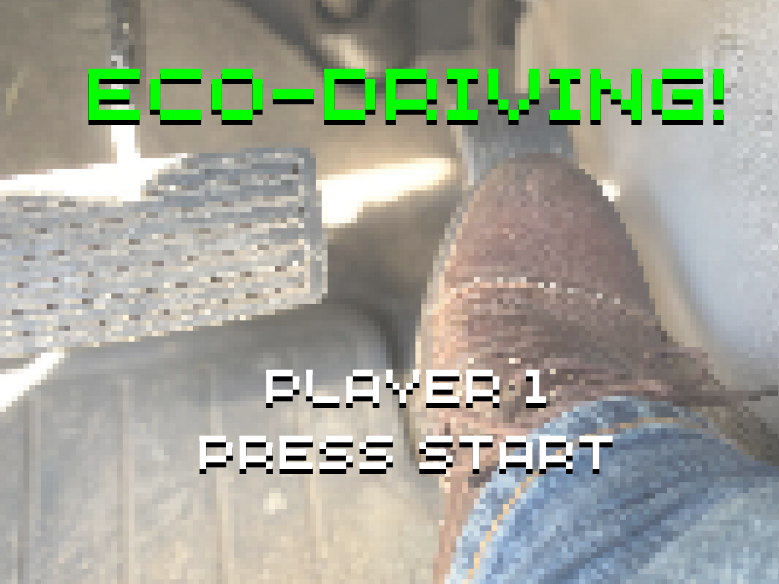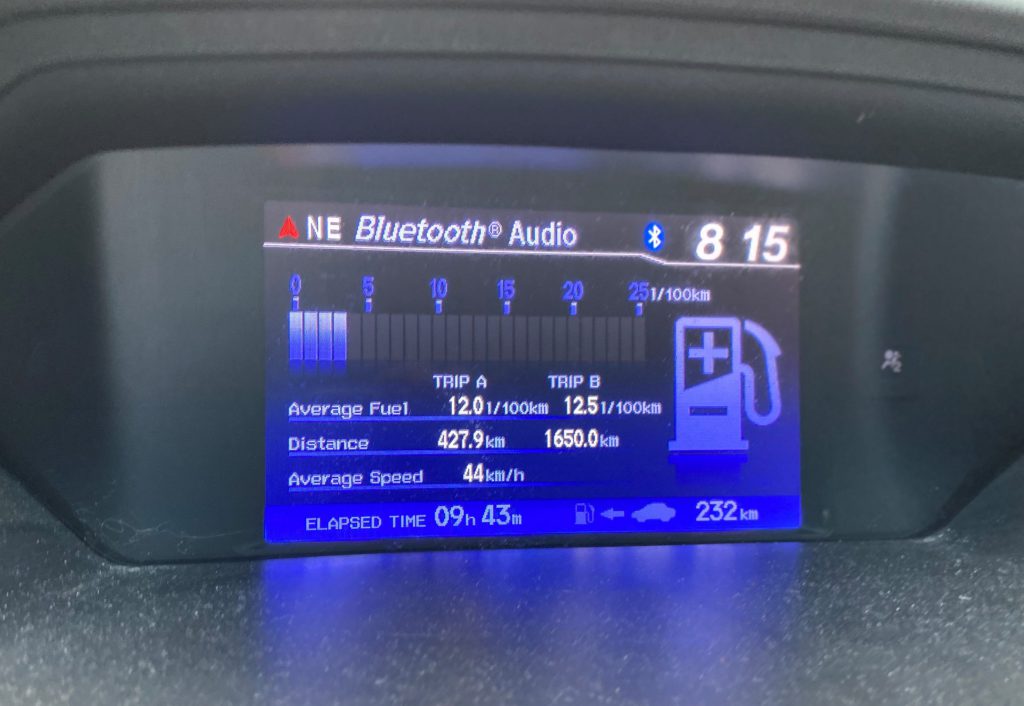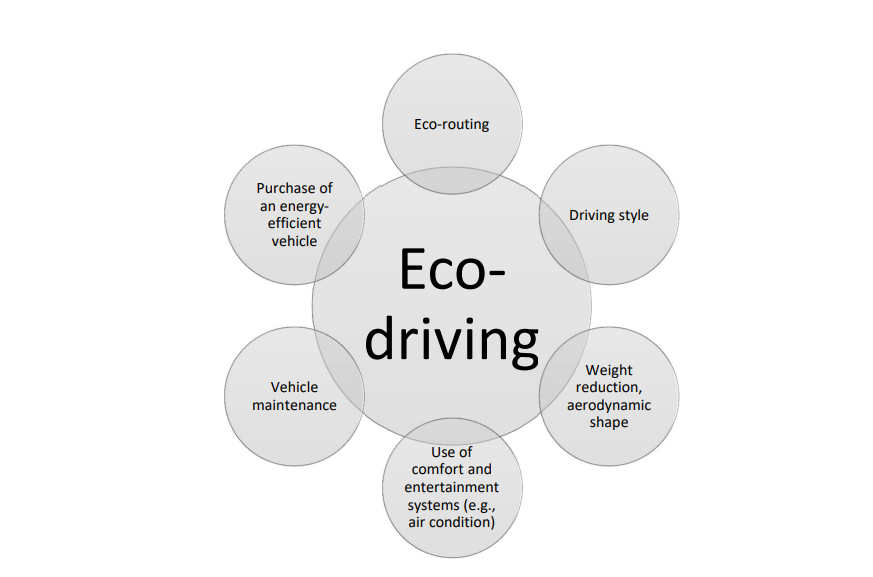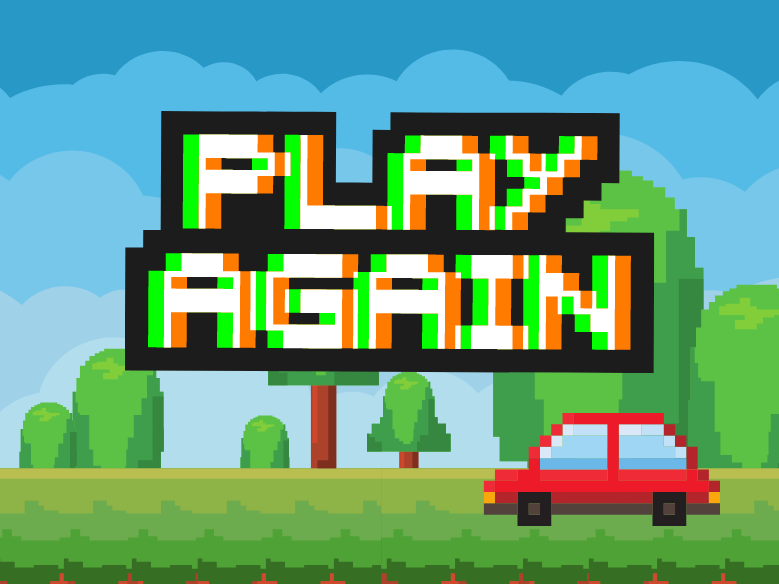
Make a game out of fuel efficiency. And, in so doing, spend less money and put less wear and tear on your vehicle. The name of the game? Eco-driving!
Eco-driving (also known as hypermiling) means operating your vehicle in ways that are more energy-efficient and… bonus points… safer. In fact, research has determined eco-driving can reduce fuel consumption between 15% and 25% and GHG emissions by at least 30%.
- Revving your engine at a stoplight while giving the driver next to you the eye? Nope, not eco-driving.
- Accelerating aggressively to get up to speed? Nope, not eco-driving.
- Suddenly slamming your brakes because you didn’t anticipate the vehicle ahead? Nope, definitely a noob move.
You get the idea.
Now that it’s common for vehicles to display current fuel consumption information (i.e. # litres of fuel consumed per 100 km travelled), it can be easier to adjust your driving behaviour to improve your eco-driving score based on the vehicle’s feedback. And if your vehicle doesn’t have such a display, well, you can still monitor your engine’s revolutions per minute (RPM) and track your game score the old-fashioned way using your trip meter or seeing how many days, weeks or months you can go without filling up.

Ready Player 1? Good. Here are your top five tips for levelling up your eco-driving game.
-
Stop mashing the controls
Putting the pedal to the metal won’t get you far in this game. The harder you accelerate, the more fuel you use. Rather than “flooring it,” accelerate gently and steadily to reach your desired speed without running your engine too hard.
-
Steady wins the fuel race
Maintaining a consistent speed goes a long way to conserving your fuel “health points” – much further than letting your speed drop and rise absentmindedly. In fact, Natural Resources Canada cites studies showing that, when you increase and decrease your speed between 75 km/hr and 85 km/hr every 18 seconds, you increase your fuel use by about 20%. Cruise control can help you maintain a consistent speed, but avoid using the feature when driving in poor conditions – it can work against you.
-
Avoid hitting the turbo boost
Engines consume more fuel at higher speeds. Vehicles are most fuel-efficient when travelling between 50 and 80 km/hr. Keep an eye on speed limits and resist the temptation to exceed them. You’re not saving much time by going 90 km/hr in an 80 km/hr zone. And hey, not only are you saving money on fuel costs, you’re also keeping cash from going towards speeding tickets.
-
Don’t let your mind lag – anticipate traffic
When you predict what is going to happen ahead of you – due to other vehicles, pedestrians, traffic lights, etc. – you can make simple adjustments to achieve a more consistent speed and conserve fuel. For example, if you see traffic slowing down ahead, ease off the accelerator and coast in anticipation of needing to apply your brakes.
It helps if you leave a good amount of space between other vehicles, too (and there’s that safety bonus!).

-
Power up your vehicle for winning
So far, we’ve mostly talked about eco-driving in terms of adjusting driving behaviour. But you can also power up your fuel efficiency by looking after your vehicle.
- Choose your PLAY…er… VEHICLE! Get a head start with the right one. When choosing, compare vehicles’ fuel efficiency ratings. Considering an electric vehicle? Even better. And the benefits of eco-driving apply to conserving battery life.
- Check your tire pressure regularly, as underinflated tires can be a real drag. The recommended tire pressure is usually printed on the inside of the driver-side door well. Many modern vehicles also have a tire pressure monitoring system that will alert you when your tire pressure drops too low.
- Lighten up. A vehicle carrying unnecessary weight must work harder, using more fuel. You may choose to remove that bike rack or cargo carrier when you’re not using it. Keep the emergency kit, though.
- Enjoy the breeze. Air conditioning increases a vehicle’s fuel consumption. According to studies, air conditioning can reduce a conventional vehicle’s fuel economy by more than 25%. Also, fresh air is good for you.
There’s even a free online eco-driving course you can take to learn more. Now that you’ve got the knowledge, you’re ready to make a game of eco-driving. Challenge yourself by setting goals. If your vehicle displays how much fuel you’re consuming, try to bring that number down. If no display, use your trip meter to track how much distance you can cover before needing to refuel.
Of course, the best way to conserve fuel is to drive less often. Consider using active forms of transportation and public transit when you can.
Save fuel and reduce your ecological footprint. Win-win.

Enjoyed this post? Try these:
>> How We are Making Active Transportation Better in BC
>> Helpful Tips to Charge Your Electric Vehicle and Extend Your Range in BC
>> Scenic Not Steep – The Flattest Route from Victoria to Alberta
Please refrain from encouraging those people who like to take a mile to get up to posted speed after stopping at a ‘highway’ traffic light. There are others behind you who also want to get past that light! Get on with it…
Thanks for your comment, Ray.